With an endless number of engagement ring styles to choose from, selecting a setting can be almost as confusing as selecting a diamond. We prepared a guide to help you navigate the options and figure out which ring is right for you.
The Primary Elements
The setting is made up of several parts as shown in this diagram:
The top portion of the setting holding the center stone.
The tips of the head securing the diamond into place.
The underside of the head at the top of the shank.
The body of the ring that wraps around the finger.
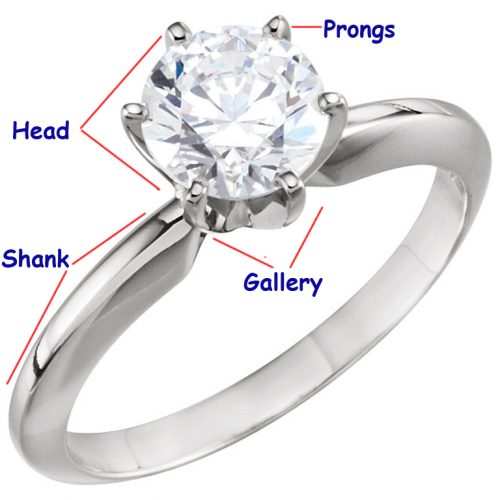
Common Styles of Rings
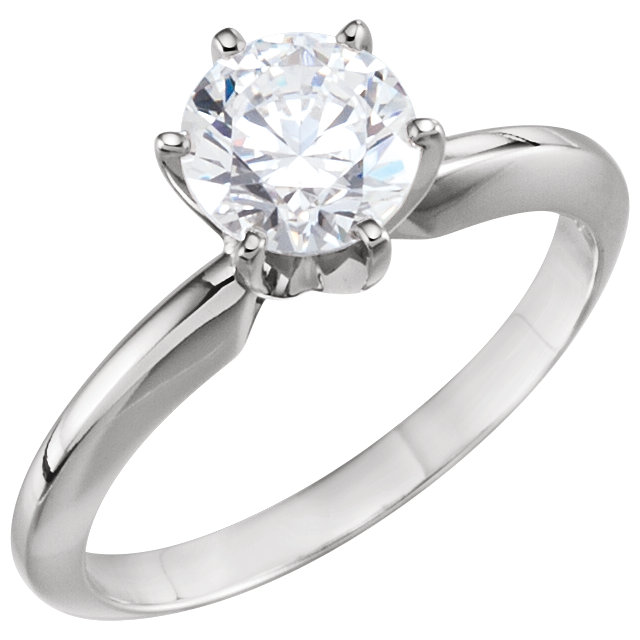
Solitaire
The classic quintessential engagement ring of a single solitary center diamond, ergo the name. The solitaire diamond can be any shape, not necessarily a round diamond. The most common ring that comes to mind is the Tiffany’s style round solitaire, but there are many other solitaire styles to choose from.
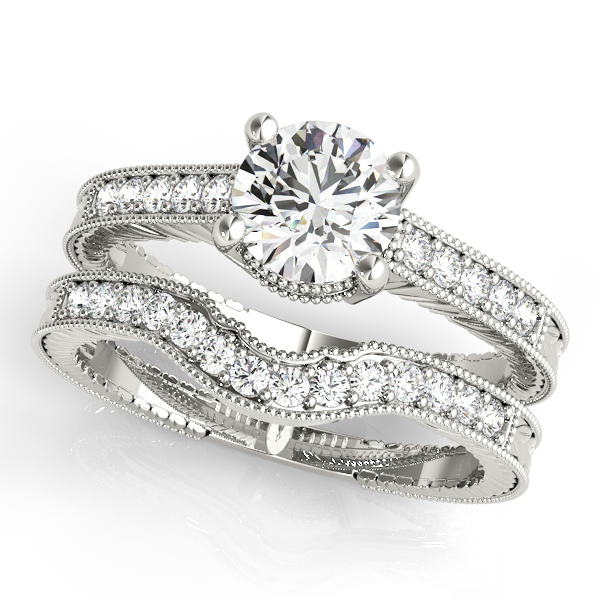
Channel Set Rings
As the name implies, the diamonds accenting the engagement ring are set in a track, or groove, known as a channel. This setting provides a clean look and is very secure.
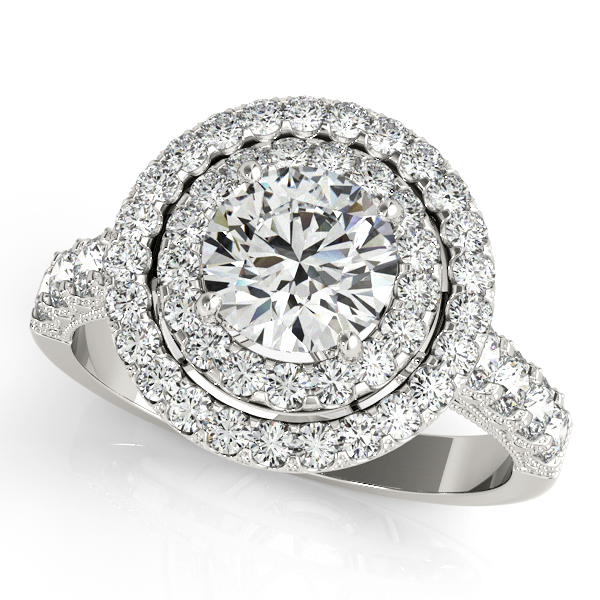
Halo
Halo engagement rings are characterized by an outline of smaller diamonds surrounding the center stone. Halos can be designed to match any shape diamond, from a square princess to a cut-cornered emerald. Halos come in single rows, double, and even triple halos, and can feature colored diamonds and gemstones to add another dimension to the ring.

Cathedral
Cathedral engagement rings feature arches or “shoulders” that lead up towards the center diamond and appear to place the diamond on a pedestal. The diamond tends to sit a little higher but allows wedding bands to sit flush against the ring.
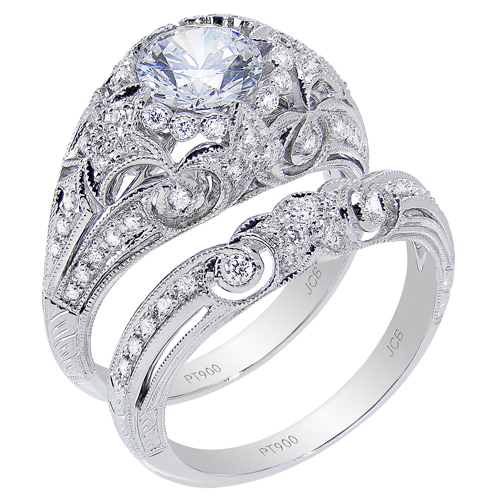
Vintage
Old is the new “new”. Vintage rings are very trendy and growing tremendously in popularity. These rings tend to feature engravings called filigree, and small beads along the edges called milgrain. The filigree designs are hand engraved by highly skilled artisans and are therefore very labor intensive to produce. These types of settings are very popular for Old European Cut and Old Miner’s Cut diamonds.
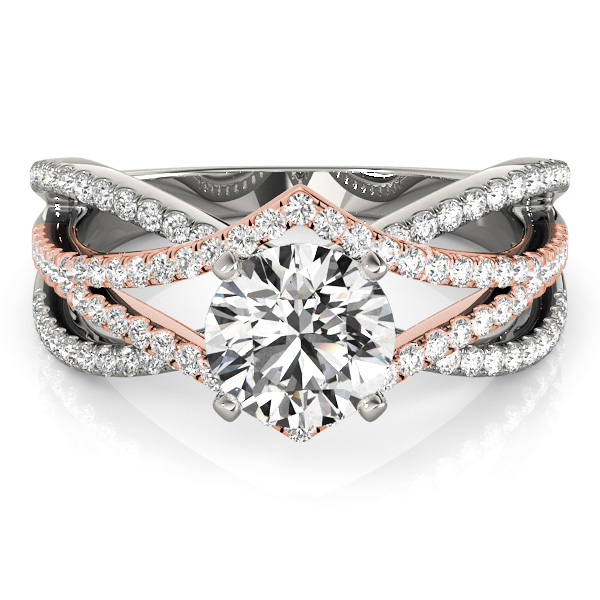
Pave, Micro-Pave, and French Pave
Pronounced Pa-Vay, the style features small diamonds set close together to look like the ring is paved or crusted with diamonds. Rather than featuring independent prongs, the diamonds are set in small drill holes and metal is folded around them to hold them in place. French Pave engagement ring refers to the V cut in between the diamonds. The jeweler cuts a V shape into the metal to reduce the amount of metal surrounding the diamonds and create a raised look.
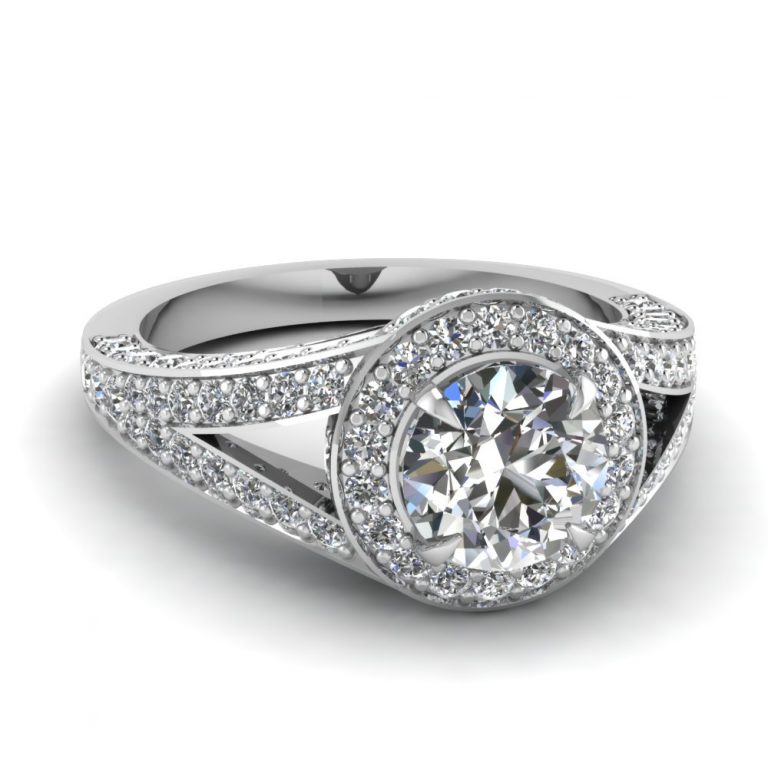
Bezel Set
Bezel refers to the metal border surrounding the diamond. This type of setting has no prongs, instead metal is folded over the edges of the diamond to enclose the stone and protect it from physical impact. This is the most secure and protective setting because the bezel surrounds the entire making it highly unlikely the diamond will pop out or get damaged. Infact to remove the diamond from the setting the bezel must be sawed off.
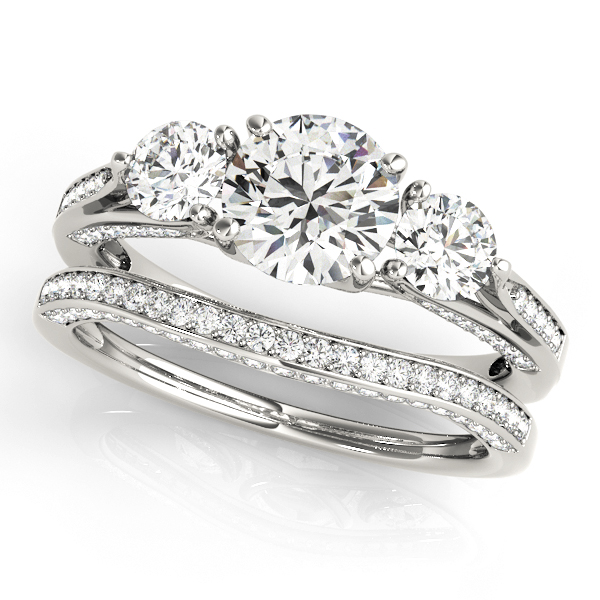
Three-Stone-Rings
Three stone engagement rings feature three gemstones symbolizing the past, present, and future of the couple. While the center stone is typically a diamond flanked by two smaller diamonds, the ring can be personalized to feature any combination of shapes, sizes, and color.
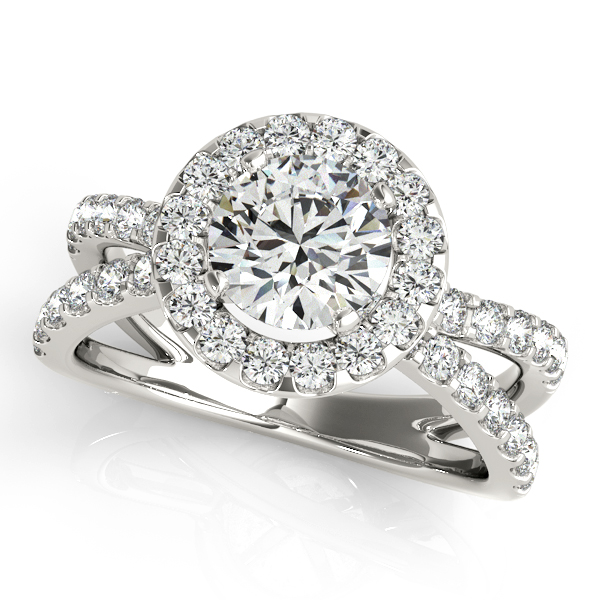
Split Shank Rings
As the name implies, the shank splits in two. The split can be featured in a many different combinations, such as straight lines converging towards the center diamond, curved lines flaring out, and more.
